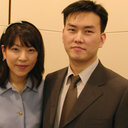CDDO-Me, Sulforaphane and tBHQ attenuate the RANKL-induced osteoclast differentiation via activating the NRF2-mediated antioxidant response.
Raktažodžiai
Santrauka
Metabolic bone diseases are global public health concerns and are primarily caused by uncontrolled osteoclast (OC) formation and activation. During OC differentiation, intracellular reactive oxygen species (ROS) stimulated by receptor activator of nuclear factor kappa-B ligand (RANKL) can serve as the signaling molecules to promote osteoclastic genes expression. Nuclear factor erythroid-2 related factor 2 (NRF2), a master mediator of cellular antioxidant response, also plays a critical role in OC differentiation through the regulation of redox homeostasis. In this study, we investigated the effects of three NRF2 inducers on osteoclastogenesis, including Bardoxolone methyl (CDDO-Me), Sulforaphane (SFN), and tert-butylhydroquinone (tBHQ). By treating RAW cells with three compounds, we found that NRF2 was activated and its downstream antioxidant genes were upregulated, and the RANKL-induced intracellular ROS production and osteoclastogenesis were impaired. Additionally, the expression of nuclear factor of activated T cells c1 (NFATC1), C-FOS and tumor necrosis factor alpha (TNFα) were inhibited after acute exposures (6 h) to the three compounds. Furthermore, suppressed the expression of osteoclast differentiation-associated genes, tartrate-resistant acid phosphatase (TRAP), cathepsin K (CTSK), matrix metalloproteinase-9 (MMP-9) and dendritic cell-specific transmembrane protein (DC-STAMP) were observed after prolonged exposures (5 days) to the compounds. Taken together, these results suggest that CDDO-Me, SFN and tBHQ attenuate RANKL-induced osteoclastogenesis via activation of NRF2-mediated antioxidant response. Among these compounds, relatively low concentrations of CDDO-Me showed stronger active and inhibitory effects on antioxidant response and osteoclastogenesis, respectively.



